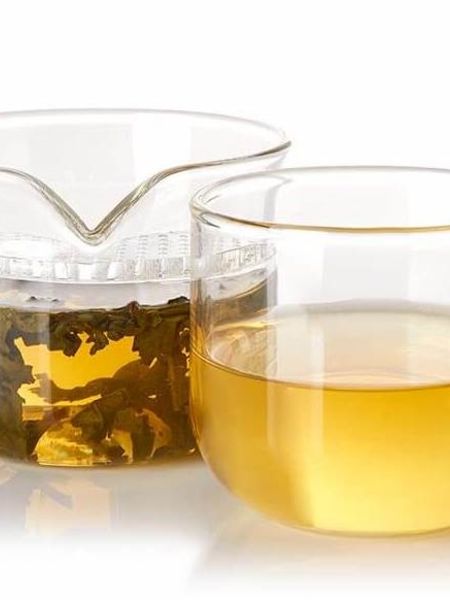Tea Cupping is the Foundation for Tea SELLING

Cupping, the procedure for professional tea tasting, is critical to educate your palate, increase your knowledge of tea, and to sell more tea. Customers love to learn all the nuances you’ve discovered about your inventory of teas and the more they learn, the more excited they will be to buy.
The most vital piece of equipment in professional cupping is the classic white porcelain tea tasting set with serrated brewing cup, lid, and tasting cup. A great alternative, with its advantage of seeing and appreciating the color of the tea brewing is a clear glass tasting set with filter.
While it is easy to use, we suggest you practice if you’re new to this equipment. Start by using only cool water at first, then hot water before brewing tea with the set. Fill the Brewing Cup with water to just under where the serrated edge begins. Filling the cup too high will incur spillage.
To decant, lift the Brewing Cup by its handle with your dominant hand and place your thumb tightly on top of the lid. With your other hand, hold the Tasting Cup right next to the brewing cup, then tip the Brewing Cup horizontally, onto the top of the tasting cup, serrated edge down. The liquid will pour out easily.
By practicing first with water, you’ll learn how to tip the brewing cup onto the tasting cup quickly and safely without spilling a drop onto you or anywhere else. Now you’re ready for a full-bore cupping session with fresh tea and heated water.
SETTING UP FOR A PROFESSIONAL CUPPING SESSION:
USE ALL YOUR SENSES FOR CUPPING:
SMELL: Do you detect a tang, sweetness, an acrid or dull scent in the spent leaves? Highly floral or sweet or earthy and muscatel? Smell the liquor. Is it pleasant, familiar to the category, heavy or light fragrance?
OBSERVE: How do the brewed leaves look? How do they feel? Fully opened leaves indicate complete brewing. Those that are not indicate longer brewing times may be necessary. When done, place the lid on the cup so that you can see the spent leaves. View the color of the liquor for brightness, clarity, hue of the color. Cloudiness indicates excessive dust or fannings(very tiny leaf particles). Hues can range from nearly clear to pale yellow to a bright clear chartreuse for various greens; oolongs and blacks can range even further from palest yellow to golden to mahogany red.
TASTE: If you’re cupping alone, take a taste from the cup. No need for delicacy; take a good slurp with a little air. Swill the tea in your mouth, breathe in through your nose to enhance the flavor and fragrance of the tea in your mouth. Any characteristic more predominant than others? Anything missing? Spit the liquid into a spittoon bowl. Take another taste if you have any doubts about this selection. Slurp and spit OR slurp and swallow? Most professional tea tasters slurp and spit while others insist on swallowing each sip because they believe that reveals more about the characteristics of the selection. This can wreak havoc on your stomach, especially after tasting large quantities of tea. When the session is completed, eat some cheese and crackers, milk and toast or a little yogurt with a piece of pita. This will ease any distress your stomach might develop. Flavor Profile Clues: The tea taster’s vocabulary is huge, but you’re looking for such textural characteristics that you can feel in your mouth: briskness, heavy or light body, complexity, and aftertaste plus such classic tea flavors as vegetal, sweetness, mineral, earthy, nutty, spicy, marine, floral or fruity. Ask yourself if the taste is typical of this tea type, is it ordinary or superior, how does it feel on the palate, and is there an aftertaste.
REPEAT: Re-brew each sample to determine if it has worthy second or third cups, or more. Increase the length of brewing times slightly with each brewing. Experiment with different water temperatures and different brewing times. If you’re not tasting distinct flavor, the tea may be dull, old or poorly processed, and you should pass on this sample. Clean, Rinse, Taste, Repeat. Rinse your mouth thoroughly with water after each cupping category or eat a small plain water cracker or piece of plain white bread to cleanse the palate. If you’re able, use different utensils for each tea selection. If not available, clean spoons and cups after each use with hot water then dry them off.
FOR MORE INFORMATION: Please visit our Tea Class on tea tasting terms: or visit a consumer-focused article on our consumer site Tea Muse
*Make tea tasting easy, use an electric kettle with an adjustable temperature gauge which matches the tea type to the right temperature of water.

